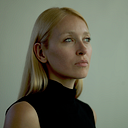Hey, Museums! Forget Descartes and Be Happy
As some of you might already know, I am in charge of the programme of the international conference Museum Connections, within the +4000 visitors fair dedicated to the businesses of museums, taking place in Paris every year. The last edition was on 16 and 17 January 2019, and I had the pleasure to organise and moderate a panel called “Is Happiness the New Business of Museums?”. To prepare this session, I published an article last year, and here are my learnings from this so-called panel.
On stage, we had Gemma Boon, Director of the Museum No Hero (The Netherlands), Gaby Porter, Project Manager of The Happy Museum by the UK Association of Museums (United Kingdom), Timothy Heckscher, Founder of the mobile application Muzing by Culturaliv (France) and Dustin Growick, Senior Creative Consultant + Team Lead for Science for Museum Hack (United States).
Happiness is neuroscientists’ business
The discussion started right on point with Gaby Porter mentioning seeing the museums following the Descartes belief “I think therefore I am”, while neuroscientists today see the nature of being human as way more provisional. Happiness is produced by “happy chemicals”, some neuro-chemicals that appear in specific circumstances. For instance, you will start to be happy if you work towards a meaningful goal and even more if you achieve something to which you give purposeful value. You will be happy if you have a daily physical practice or relax and feel a sense of calmness with meditation, contemplation or self-awareness. Social bonding and feeling part of a group is also a strong happiness enhancer which helps you work on your self-confidence and start to generate trust and generosity towards the others and create a feeling of harmony with your community. Happiness helps people to find a sense of personal meaning and belonging.
“I feel therefore I think I may be”
If museums today want to make their visitors happy, they should understand what happiness is and how to facilitate it. Therefore, thinking like Descartes will close them from the emotional potential of museums. Neuroscientists will say “I feel therefore I think I may be” and this maxim should be applied to today’s museum’s culture.
Happiness is different for everyone
People are now aware of the personal relevancy-value of each thing and demand this kind of evolution from the museums too. Like Dustin Growick explained it clearly in the panel, museums can not anymore think “This is who we are, and this is what we are about, and you come here to experience us”. Offering a transformative experience to visitors comes with allowing them to curate their own experience. Therefore, today’s museum’s mindset should be “This is a place for you to experience what suits you and fit to your own happiness”.
Dustin Growick underlined that “Happiness is different for everyone”. Finding the right way to engage and share learnings to everyone in the same place is the challenge of Museum Hack. Each visitor should be able to access the same level of relevance, joy and happiness in them. Museum Hack does that through great storytelling, by allowing the people to bring themselves in the tour and become meaning-makers, but also by transforming the visit into a VIP experience where each visitor will feel empowered. Timothy Heckscher emphasised the importance of “when the museum is talking to you, not at you”.
Talking to the local communities is the main happiness trigger for The Happy Museum project. Gaby Porter told us about the “A Rubbish Night at the Museum” that took place in 2018 at the Manchester Museum. It all started with people from the locality wanting to address the rubbish and waste issue of Manchester through community engagement in collaboration with the museum. The action expanded up to this special night but also a temporary exhibition and a campaign in the community in which the museum is still involved in.
The Museum of Homelessness is another example given by Gaby Porter to illustrate the need for museums to connect with the people directly. This project seeks to collect objects and stories that matter to people who are living without homes. The Manchester Art Gallery runs a series of events, “Objectified”, looking at the effect of homelessness on people by creating a safe and open space for participants to discuss with the community but also neuroscientists.
Afterwards, Gemma Boon told us about the alternative audioguide offered at the Museum No Hero which features a philosopher facilitating a certain kind of introspection and personal reflection on the collection. The family version of the audioguide asks quite open questions to the family members so they can talk about it and discuss together.
How do you transform a conversation into a discussion?
Considering all these examples, a question came to my mind: How do you transform a conversation into a discussion? Dustin Growick revived the importance of personal-relevance and bespoke storytelling as an essential criterion for a good museum experience. For Museum Hack, everything is participatory, so everyone should be doing something during the visit. He also mentioned that the ethos should be at the very beginning of every part of the museum’s activities to create a dialogue with its visitors.
